Do you have a question about the Siemens SIMATIC IM 151/CPU and is the answer not in the manual?
Defines qualifications required for installing and working with the equipment.
Provides notes on the proper and safe application of the device and its components.
Lists registered trademarks of SIEMENS AG used in the documents.
Explains the manual's scope and how it supplements other ET 200S documentation.
Identifies the intended audience for the manual, including engineers and technicians.
Details the contents of the delivery package, listing the included manuals.
States the manual's validity for specific order numbers and components of the ET 200S.
Lists relevant industry standards and certifications applicable to the ET 200S.
Describes features within the manual to help locate specific information quickly.
Describes the IM 151/CPU's role and features within the ET 200S distributed I/O system.
Helps users locate relevant information across the various manuals in the ET 200S package.
Explains the default method of assigning addresses based on module slots in the IM 151/CPU.
Describes how to manually allocate addresses within the IM 151/CPU address area.
Details the principles of data exchange between the DP master and the ET 200S via intermediate memory.
Illustrates typical network configurations with DP master and multiple DP slaves.
Explains how to set the unique PROFIBUS address for the IM 151/CPU using DIP switches.
Lists the necessary network components and their order numbers for PROFIBUS setup.
Describes how to use the programming device or OP for configuration, programming, and testing.
Outlines options for configuring the IM 151/CPU as a DP slave or a stand-alone module.
Provides procedures for resetting the CPU memory using the mode selector or programming device.
Guides through the steps for initial setup and operation of the ET 200S distributed I/O system.
Explains the status indicators (LEDs) on the IM 151/CPU for fault diagnosis.
Describes using diagnostic addresses for fault analysis and error reporting in STEP 7.
Explains how to obtain and interpret diagnostic information from DP slaves.
Details the Device Database (DDB) file and key features for PROFIBUS communication.
Describes the functions of the mode selector and the various LEDs on the IM 151/CPU.
Explains the use of Micro Memory Cards for storing programs and firmware updates.
Lists settable parameters for the IM 151/CPU CPU component, configurable via STEP 7.
Provides detailed technical data, order numbers, features, and specifications of the IM 151/CPU.
Defines cycle time and its components, including operating system and user program execution.
Explains response time calculation, factors affecting it, and shortest/longest times.
Details the time from interrupt signal occurrence to the first instruction in the interrupt OB.
Guides through the physical installation of hardware components for the ET 200S and S7-300.
Provides instructions for electrical connections and wiring the ET 200S and S7-300 system.
Covers initial power-up, mode selector settings, and basic configuration steps for the IM 151/CPU.
Details the process of setting up the IM 151/CPU for independent operation using SIMATIC Manager.
Guides on programming the IM 151/CPU using the LAD/FBD/STL editor in SIMATIC Manager.
Details the steps for performing a test run, including block download and switch operations.
Covers converting the IM 151/CPU to DP slave and integrating it with the S7-300 master.
Guides on programming both the IM 151/CPU and S7-300 for communication and data exchange.
Final steps for commissioning and testing the complete system setup, including LED status checks.
Describes the structure of the configuration frame in the special identifier format (SKF).
Explains the structure of the configuration frame using the normal identifier format (AKF).
Details the standard section and general parameters within the parameter assignment frame.
Lists valid address identifiers and their corresponding parameter ranges for instructions.
Provides a list of abbreviations and mnemonics used in the instruction list.
Explains how to calculate execution times for instructions using indirect addressing.
Details bit logic instructions like AND, OR, NOT, and their execution times.
Lists system functions with their names, descriptions, and execution times in microseconds.
Lists system function blocks with their names, descriptions, and execution times in microseconds.
Compares programming differences between IM 151/CPU and selected S7-300 CPUs.
Guides on adapting existing programs for the IM 151/CPU, including handling packed addresses and rewiring.
Describes the central processing unit of a programmable controller and its components.
Explains PROFIBUS as a process and field bus standard, including its protocols.
Defines STEP 7 as the programming language for developing user programs for SIMATIC S7 PLCs.
Defines qualifications required for installing and working with the equipment.
Provides notes on the proper and safe application of the device and its components.
Lists registered trademarks of SIEMENS AG used in the documents.
Explains the manual's scope and how it supplements other ET 200S documentation.
Identifies the intended audience for the manual, including engineers and technicians.
Details the contents of the delivery package, listing the included manuals.
States the manual's validity for specific order numbers and components of the ET 200S.
Lists relevant industry standards and certifications applicable to the ET 200S.
Describes features within the manual to help locate specific information quickly.
Describes the IM 151/CPU's role and features within the ET 200S distributed I/O system.
Helps users locate relevant information across the various manuals in the ET 200S package.
Explains the default method of assigning addresses based on module slots in the IM 151/CPU.
Describes how to manually allocate addresses within the IM 151/CPU address area.
Details the principles of data exchange between the DP master and the ET 200S via intermediate memory.
Illustrates typical network configurations with DP master and multiple DP slaves.
Explains how to set the unique PROFIBUS address for the IM 151/CPU using DIP switches.
Lists the necessary network components and their order numbers for PROFIBUS setup.
Describes how to use the programming device or OP for configuration, programming, and testing.
Outlines options for configuring the IM 151/CPU as a DP slave or a stand-alone module.
Provides procedures for resetting the CPU memory using the mode selector or programming device.
Guides through the steps for initial setup and operation of the ET 200S distributed I/O system.
Explains the status indicators (LEDs) on the IM 151/CPU for fault diagnosis.
Describes using diagnostic addresses for fault analysis and error reporting in STEP 7.
Explains how to obtain and interpret diagnostic information from DP slaves.
Details the Device Database (DDB) file and key features for PROFIBUS communication.
Describes the functions of the mode selector and the various LEDs on the IM 151/CPU.
Explains the use of Micro Memory Cards for storing programs and firmware updates.
Lists settable parameters for the IM 151/CPU CPU component, configurable via STEP 7.
Provides detailed technical data, order numbers, features, and specifications of the IM 151/CPU.
Defines cycle time and its components, including operating system and user program execution.
Explains response time calculation, factors affecting it, and shortest/longest times.
Details the time from interrupt signal occurrence to the first instruction in the interrupt OB.
Guides through the physical installation of hardware components for the ET 200S and S7-300.
Provides instructions for electrical connections and wiring the ET 200S and S7-300 system.
Covers initial power-up, mode selector settings, and basic configuration steps for the IM 151/CPU.
Details the process of setting up the IM 151/CPU for independent operation using SIMATIC Manager.
Guides on programming the IM 151/CPU using the LAD/FBD/STL editor in SIMATIC Manager.
Details the steps for performing a test run, including block download and switch operations.
Covers converting the IM 151/CPU to DP slave and integrating it with the S7-300 master.
Guides on programming both the IM 151/CPU and S7-300 for communication and data exchange.
Final steps for commissioning and testing the complete system setup, including LED status checks.
Describes the structure of the configuration frame in the special identifier format (SKF).
Explains the structure of the configuration frame using the normal identifier format (AKF).
Details the standard section and general parameters within the parameter assignment frame.
Lists valid address identifiers and their corresponding parameter ranges for instructions.
Provides a list of abbreviations and mnemonics used in the instruction list.
Explains how to calculate execution times for instructions using indirect addressing.
Details bit logic instructions like AND, OR, NOT, and their execution times.
Lists system functions with their names, descriptions, and execution times in microseconds.
Lists system function blocks with their names, descriptions, and execution times in microseconds.
Compares programming differences between IM 151/CPU and selected S7-300 CPUs.
Guides on adapting existing programs for the IM 151/CPU, including handling packed addresses and rewiring.
Describes the central processing unit of a programmable controller and its components.
Explains PROFIBUS as a process and field bus standard, including its protocols.
Defines STEP 7 as the programming language for developing user programs for SIMATIC S7 PLCs.
| Engineering with | STEP 7 |
|---|---|
| Communication Protocols | PROFIBUS DP |
| Communication Interfaces | 1 x PROFIBUS DP |
| Number of DP masters | 1 |
| Power Supply | 24 V DC |
| Protection Class | IP20 |
| Compatible Systems | ET 200S |
| Number of configurable I/O addresses | 128 |
| Digital Inputs | Depends on configuration |
| Digital Outputs | Depends on configuration |
| Analog Inputs | Depends on configuration |
| Analog Outputs | Depends on configuration |
| Operating Temperature | 0°C to 60°C |
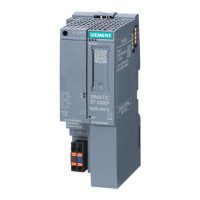
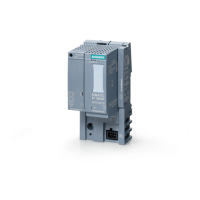


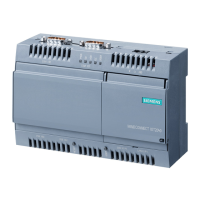
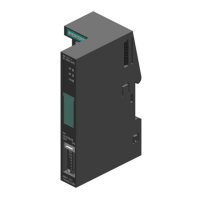
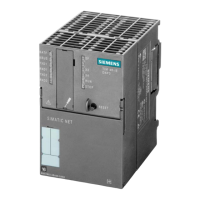
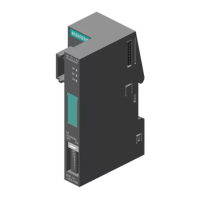
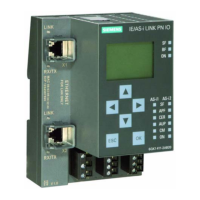
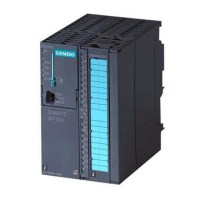

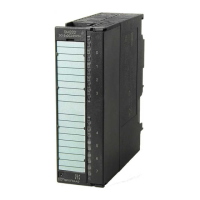
